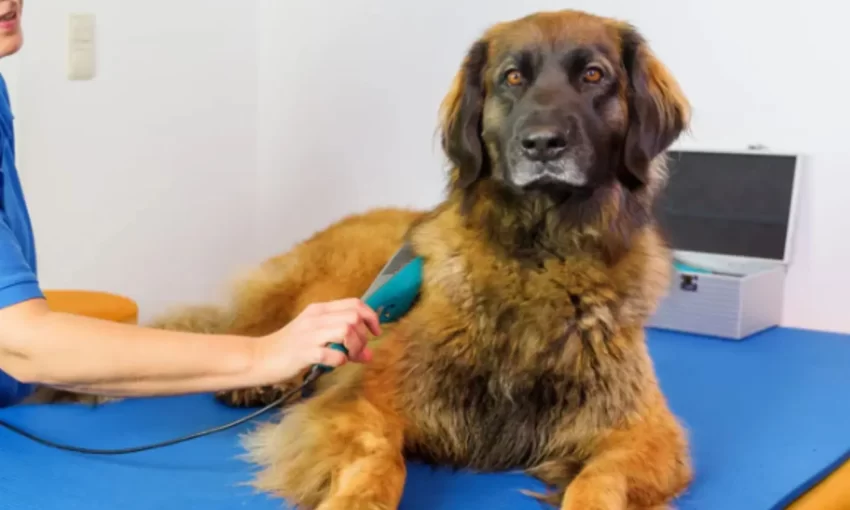As pet owners, we are always on the lookout for effective, safe, and non-invasive treatments to ensure our furry friends lead healthy and pain-free lives. One such innovative treatment that has gained popularity in recent years is laser therapy for dogs. This modern approach to pet pain relief offers numerous benefits and has become a go-to option for veterinarians and pet owners alike. In this article, we’ll explore what laser therapy is, how it works, and why it might be the ideal solution for your dog’s pain management.
Understanding Laser Therapy
Laser therapy, also known as low-level laser therapy (LLLT) or photobiomodulation, involves using specific wavelengths of light to penetrate the skin and tissues. This non-invasive procedure stimulates cellular activity, promoting healing and reducing pain and inflammation without the need for drugs or surgery.
How Laser Therapy Works
Laser therapy works by delivering light energy to the cells in the targeted area. Here’s a closer look at the physiological processes it triggers:
- Enhanced Cellular Function: The light energy absorbed by the cells enhances the production of adenosine triphosphate (ATP), which is essential for cellular repair and regeneration.
- Increased Blood Flow: Laser therapy promotes vasodilation, which improves blood flow to the treated area. This increase in circulation helps deliver vital nutrients and oxygen, speeding up the healing process.
- Reduced Inflammation: The therapy reduces the production of pro-inflammatory mediators, helping to decrease swelling and inflammation.
- Pain Relief: Laser therapy stimulates the release of endorphins, the body’s natural painkillers, providing relief from acute and chronic pain.
Benefits of Laser Therapy for Dogs
Laser therapy offers a range of benefits for dogs, making it a versatile treatment option for various conditions:
- Effective Pain Management: It is highly effective in managing pain associated with arthritis, hip dysplasia, and other musculoskeletal conditions.
- Accelerated Healing: Laser therapy can speed up the healing process for wounds, surgical incisions, and soft tissue injuries.
- Reduced Inflammation: It helps decrease inflammation caused by injuries, infections, and chronic conditions.
- Improved Mobility: By reducing pain and inflammation, laser therapy can enhance your dog’s mobility and overall quality of life.
- Non-Invasive and Drug-Free: This treatment offers a non-invasive alternative to medications, reducing the risk of side effects and drug interactions.
Conditions Treated with Laser Therapy
Laser therapy can be used to treat a variety of conditions in dogs, including:
- Arthritis: Alleviating pain and improving joint function.
- Hip Dysplasia: Reducing inflammation and discomfort.
- Intervertebral Disc Disease: Promoting healing and reducing pain in spinal conditions.
- Soft Tissue Injuries: Accelerating recovery from sprains, strains, and ligament injuries.
- Post-Surgical Recovery: Enhancing healing and reducing post-operative pain.
- Chronic Pain Conditions: Providing long-term relief for conditions like degenerative joint disease.
What to Expect During a Laser Therapy Session
A typical laser therapy session for dogs is straightforward and stress-free. Here’s what you can expect:
- Assessment: The veterinarian will evaluate your dog’s condition and develop a tailored treatment plan.
- Application: The therapist will use a handheld device to direct the laser light over the affected area. The procedure is painless, and most dogs find it relaxing.
- Duration: Sessions usually last between 5 to 20 minutes, depending on the size of the area being treated and the severity of the condition.
- Frequency: The number of sessions required will vary based on your dog’s specific needs. Some dogs may benefit from multiple sessions per week initially, followed by maintenance treatments.
Is Laser Therapy Safe for Dogs?
Laser therapy is considered safe and effective for dogs of all ages and breeds. It has minimal side effects, with the most common being a temporary increase in energy levels due to pain relief and improved mobility. However, it’s essential to have the therapy administered by a trained and certified veterinarian to ensure the best results and avoid any potential risks.
Conclusion
Laser therapy represents a modern and promising approach to pet pain relief. Its ability to alleviate pain, reduce inflammation, and promote healing makes it a valuable addition to traditional veterinary treatments. If your dog is struggling with pain, inflammation, or slow healing, laser therapy might be the solution you’ve been looking for. Consult with your veterinarian to determine if this cutting-edge therapy is suitable for your furry friend’s health needs.
